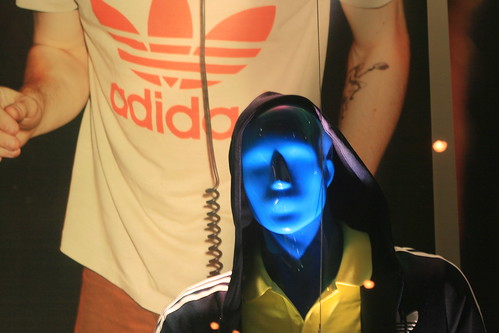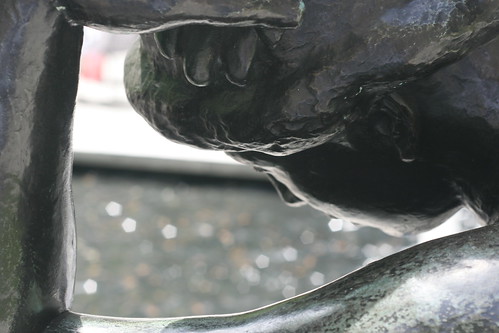You know one of the things that sucks about writing a book on the culture wars? Having to define culture. It's such a loaded term, which people have been trying to define for quite awhile, certainly since the 19th century (when a whole lot of things were getting defined).
You've got
Matthew Arnold. In
Culture and Anarchy, he defines culture as "being a pursuit of our total perfection by means of getting to know, on all the matters which most concern us, the best which has been thought and said in the world." In a lot of ways, this is thinking of culture as an object, something out there. The "best" he talks about is what defines canons of art and literature. If you read the best books and study the best art and immerse yourself in the best philosophical thinking, then you can call yourself cultured. Culture becomes an identity. Some would argue that the humanities themselves are borne out of this sense of culture. If you go to a university and study the best, you come out cultured. Of course, this idea has been complicated by those like
Stuart Hall. Hall and his peers looked at working class cultures (among other things) with the point of saying that even those whom we would not normally see as cultured have a culture. Just as you can talk about the best poetry, you can talk about the best rock-n-roll. This understanding of culture leads us to the idea of the popular, the label usually ascribed to cultural texts that are widely appreciated and not usually part of high culture.
American Idol and
Cosi Fan Tutte are both well-known cultural texts in the field of music, but the kinds of culture each represents could not be more different (and the fact that I both hold a PhD in English and had to look up how to spell "tutte" says something about the blurring of lines between high, low, and popular cultures, too). When it comes to studying art, Arnold's definition of culture certainly remains important.
Then we get into anthropology, a field that has been deeply criticized yet is foremost in most of our minds when we think of culture. There's
Edward Burnett Tylor who worked in the same general place and time as Arnold. In his work on "primitive cultures" (an ugly phrase by our standards today), he says that culture, "taken in its broad, ethnographic sense, is that complex whole which includes knowledge, belief, art, morals, law, custom, and any other capabilities and habits acquired by man as a member of society." This is a much broader definition of culture than Arnold's. Though we now cringe at much work from the nineteenth-century on "the other," this is a pretty important stage in defining culture. Culture is no longer about texts or objects. It's still about knowledge, but it's about the kind of knowledge that we gain throughout our lives. Just as we learn language as we grow, we learn culture over time, too. Also, this broad definition pretty much contains all of what it means to be human, and that means that this definition of culture allows for oppression. If you remove from a person or larger group of people part of what makes people human, then you oppress that person or group. If marriage is part of what defines a culture, and you do not allow a group of people such as lesbians and gays to marry, then you are oppressing them. If voting is a part of culture, and you do not allow a group to vote (as was very common before a range of voter's rights acts in this country), then you are oppressing them.
It's worth noting that both of these definitions try to create a stable understanding of culture during a time when there was a lot of upheaval in the world with wars, revolts, protests, colonization, and other disruptive and often violent acts taking place around the world.
Arnold taught us to think of culture as something we can obtain through study. Tylor taught us that culture is something we are born into and learn throughout out lives. Sociology deepened things more.
In the twentieth-century in America, we get to
Talcott Parsons. I had not heard of him before today, but I can see how he is important in defining culture. He brought structuralism into the mix by trying to uncover what it is in culture that makes us act the way we do. If Tylor defined culture in a broad sense and saw it as something we learned over time, Parsons dealt with what creates culture in the first place and how it maintains itself. He developed what seems to be a pretty complex and abstract theory of social action known as the AGIL Paradigm (AGIL stands for adaptation, goal attainment, integration, and latency). What I think is important about this is that a lot of the work in cultural studies and in social theory in general (as it is taught and has been taught in graduate schools for a good couple of decades now) can connect to his ideas. I'm thinking in particular of ideology and discipline. I'm not saying that Parsons is the father of theory. People were writing about these things before he was around. I'm just saying I see a connection.
Of course, for my work, it's not so important that I define culture coherently or cohesively. It's more important that I examine texts from the time period and see how they define culture, explicitly or implicitly. And it's important to have a firmer grasp on ways of defining culture so I can see where certain people and ideas fit. After all, everyone starts somewhere.
I'm auditing a class at NYU this semester called Issues in Arts Politics. I was excited to be allowed to audit because I thought it would help me with my book project, and it certainly looks like it will. It will get me thinking about the larger issues I have to deal with, like defining culture. Today was the first day of class, and I was thinking that I should condense my notes in a way that is relevant for me. So all of this is taken from class lecture and discussion and filtered through my own particular lenses. I'll try to do this each week even if it does mean leaving the house at 5:30 in the morning to get there on time.



